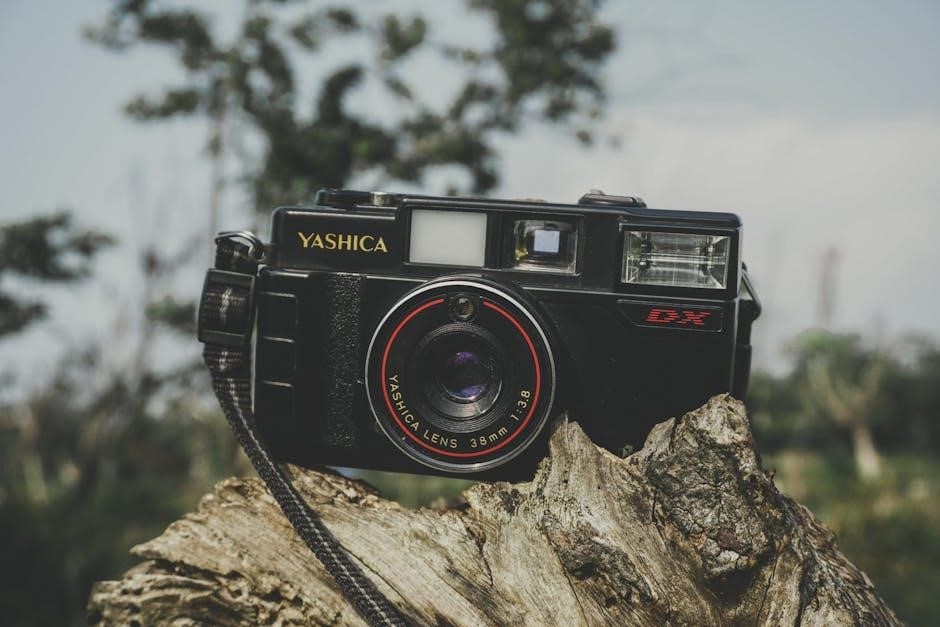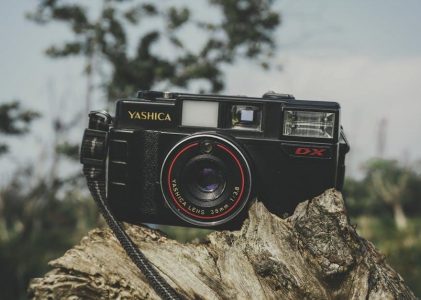The Yashica 124 is a celebrated medium format twin-lens reflex camera, cherished for its portability and ease of use, making it a favorite among photography enthusiasts seeking creative expression.
Overview of the Yashica 124 Camera
The Yashica 124 is a highly regarded medium format twin-lens reflex camera, designed for portability and ease of use. It is well-suited for both amateur and professional photographers, offering a balance of functionality and simplicity. The camera features a 6×6 cm format, making it ideal for capturing high-quality images with excellent detail. Its compact design and intuitive controls allow for seamless operation, while the built-in light meter provides accurate exposure readings. The Yashica 124 is also known for its durability, with a robust construction that ensures long-lasting performance. With its ability to shoot in various lighting conditions, it remains a popular choice among enthusiasts of medium format photography.
Historical Context and Significance
The Yashica 124 holds a significant place in the history of photography as a bridge between earlier models like the Yashica-12 and the development of more advanced medium format cameras. Introduced in the early 1970s, it was designed to be more accessible and user-friendly than its predecessors, catering to both professionals and hobbyists. The Yashica 124 is often praised for its role in popularizing medium format photography by offering a compact and affordable option without compromising on image quality. Its release marked a turning point in Yashica’s legacy, solidifying the brand’s reputation for producing high-quality, reliable cameras that are still sought after today by collectors and enthusiasts alike.
Camera Features and Specifications
The Yashica 124 is a medium format camera using 120 or 220 film, featuring an 80mm f/3.5 lens with a Copal shutter and manual aperture control.
Key Components of the Yashica 124
The Yashica 124 features a robust design with a focus on functionality. It operates using 120 or 220 roll film, providing 12 or 24 exposures respectively. The camera is equipped with an 80mm f/3.5 Yashinon lens, known for its sharpness and contrast. A Copal leaf shutter offers speeds from 1/500 to 1 second, plus a B mode for long exposures. The aperture range spans f/3.5 to f/22, allowing precise control over light. Additional features include a PC sync port for flash, a bright viewfinder with framelines, and a manual focusing system with a minimum distance of 1 meter. The camera also supports multiple exposures, enhancing creative flexibility for photographers. Its mechanical design ensures durability and reliability, making it a favorite among medium format enthusiasts. The Yashica 124 balances simplicity with advanced capabilities, catering to both amateur and professional photographers. Its compact size and intuitive controls further enhance its appeal in the world of film photography.
Lens Information and Capabilities
The Yashica 124 is equipped with an 80mm f/3.5 Yashinon lens, renowned for its optical clarity and versatility. Designed to deliver sharp images with excellent contrast, this lens is ideal for portraits, landscapes, and street photography. The aperture range of f/3.5 to f/22 provides precise control over depth of field, allowing photographers to achieve desired effects. The lens features a robust mechanical design, ensuring smooth focus and aperture adjustments. Its compact size and moderate focal length make it suitable for a variety of shooting scenarios. Additionally, the lens is compatible with 55mm filters, enabling creative experimentation. The Yashinon lens is a cornerstone of the Yashica 124’s appeal, offering a balance of portability and high-quality optics that satisfy both enthusiasts and professionals.
Shutter Speed and Aperture Control
The Yashica 124 offers a range of shutter speeds from 1/500th of a second to 1 second, plus a Bulb mode for extended exposures. The aperture control on the 80mm f/3.5 lens ranges from f/3.5 to f/22, providing flexibility for depth of field adjustments. Both controls are manual, allowing photographers to fine-tune exposure settings. Shutter speed and aperture work together to achieve the desired exposure, with each stop adjustment impacting the overall brightness. Understanding these controls is crucial for mastering manual photography. The camera’s mechanical design ensures smooth operation, making it ideal for creative control in various lighting conditions. This combination allows photographers to balance artistic vision with technical precision effectively.
Viewfinder and Focusing System
The Yashica 124 features a waist-level viewfinder with a non-ground glass screen, designed for medium format photography. It provides a clear, upright image for easy composition. The viewfinder lacks a built-in magnifier, which can make focusing slightly challenging, but its simplicity ensures durability. Focusing is achieved manually using the lens’s focusing knob, allowing precise control over the subject distance. The lens includes a depth-of-field scale, helping photographers estimate focus zones. The system is intuitive, enabling quick adjustments for sharp images. Proper focus technique is essential, as the viewfinder does not offer split-screen or microprism aids. Regular practice enhances accuracy, making the Yashica 124 a reliable tool for photographers who value manual control.
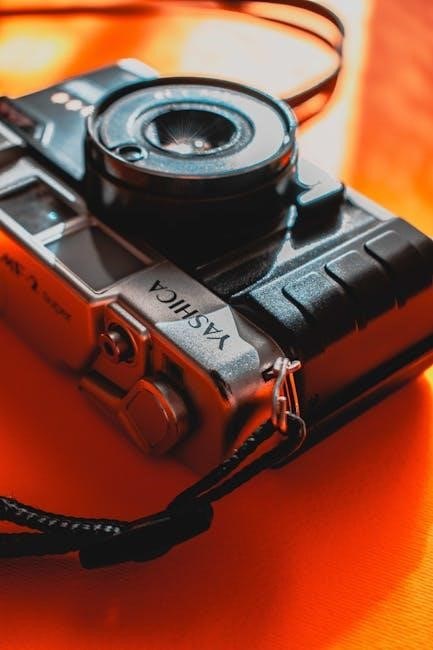
Film Loading and Handling
Proper film loading is crucial for the Yashica 124. Use 120 roll film, ensure the dark environment, and carefully attach the film leader to the take-up spool for smooth operation.
Step-by-Step Guide to Loading Film
Open the camera back by sliding the latch on the right side. Ensure the environment is dark to avoid exposing the film.
Remove the 120 roll film from its packaging and locate the film leader, which is pre-cut at an angle.
Attach the film leader to the take-up spool in the lower left compartment of the camera, aligning the arrow on the film with the spool’s notch.
Gently wind the film onto the spool using the winding knob until the film is securely attached.
Close the camera back firmly to ensure light tightness. Advance the film by turning the winding knob until the number “1” appears in the red window on the back.
Set the frame counter to “1” using the button on the top right of the camera. You are now ready to shoot.
Understanding Film Types and Compatibility
The Yashica 124 is designed to work with 120 roll film, offering compatibility with a variety of film types to suit different photographic needs. Popular options include black and white, color negative, and color slide films. The camera supports ISO sensitivities from 50 to 400, with some users experimenting with ISO 800 for specific artistic effects. It is crucial to use 120 film, as 220 film, despite its similar size, is not compatible due to its longer length. Always check the film’s expiration date and store it properly to ensure optimal results. The Yashica 124 also accommodates infrared (IR) films for unique creative effects. Choosing the right film type and ISO is essential for achieving desired outcomes in medium format photography.
Common Mistakes to Avoid During Film Loading
When loading film into the Yashica 124, several common mistakes can lead to issues such as film damage or exposure problems. One of the most frequent errors is not cutting the film leader at a 45-degree angle, which can prevent it from seating properly. Additionally, loading film in bright light increases the risk of accidental exposure. Another mistake is failing to align the film leader correctly with the spool’s guide, which can cause misfeeding. Users should also avoid advancing the film too quickly, as this can create tension and potentially tear the film. Always ensure the film is securely seated on the spool before closing the back. These precautions help ensure smooth and trouble-free film loading.
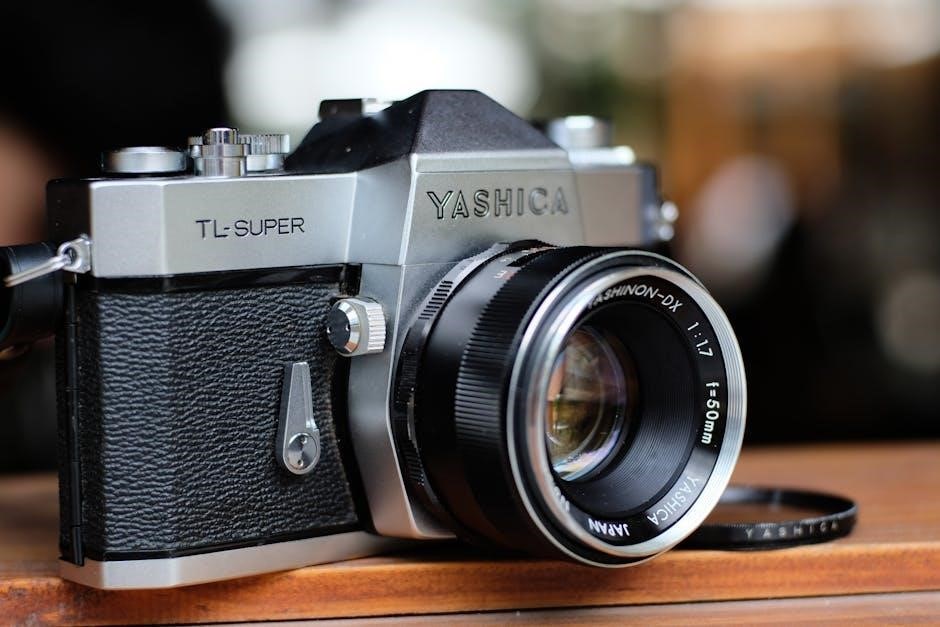
Focusing and Composition Techniques
The Yashica 124 excels in manual focusing, offering precise control for sharp images. Use the waist-level finder for accurate framing and employ techniques like zone focusing and hyperfocal focusing to ensure optimal depth of field. Composition is key in medium format photography, with the large negative size emphasizing every detail. Pay attention to balance, leading lines, and symmetry to create visually appealing shots. These techniques enhance your ability to capture professional-grade photographs with ease and consistency.
How to Use the Focusing System Effectively
The Yashica 124’s focusing system is designed for precision, with a smooth, manual focus mechanism. To achieve sharp images, align the subject with the split-image microprism in the viewfinder for accurate focus. Use the focusing ring on the lens, turning it gently until the subject is sharp. For distant or moving subjects, pre-focus by estimating the distance or using zone focusing techniques. The depth of field preview lever helps visualize the focus range at the selected aperture; Ensure steady handling to avoid camera shake, especially at slower shutter speeds. Regular lens calibration and cleaning maintain focusing accuracy. By mastering these techniques, you can consistently produce tack-sharp results with the Yashica 124.
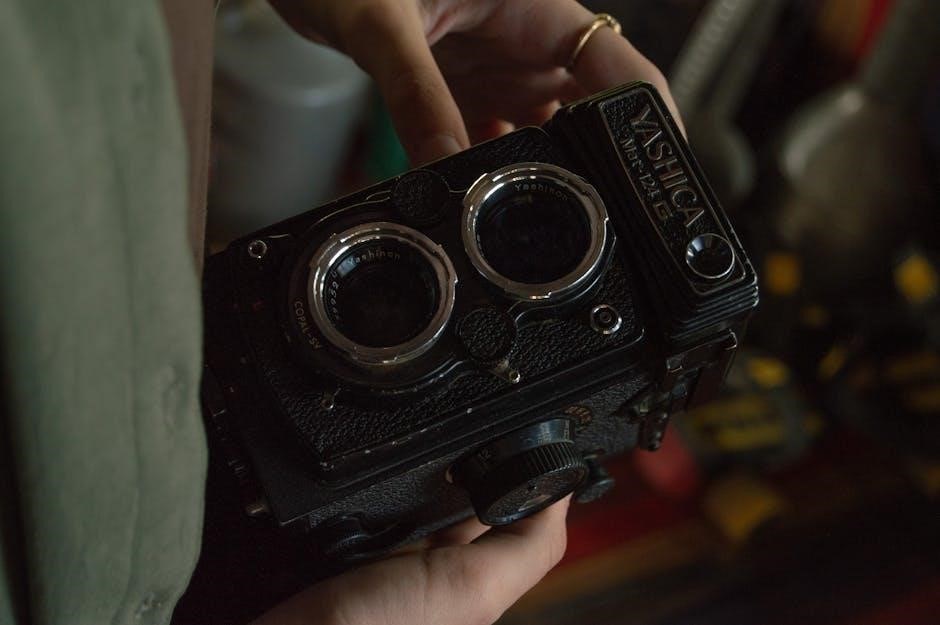
Composition Tips for Medium Format Photography
Medium format photography with the Yashica 124 rewards careful composition due to its high resolution and detailed output. The 6×6 format encourages a square aspect ratio, which can create balanced and symmetrical frames. Focus on your subject’s placement, leveraging negative space to emphasize simplicity. The camera’s ability to capture texture and tonal range makes it ideal for detailed scenes, so pay attention to patterns and contrast. Experiment with leading lines or frames within the environment to guide the viewer’s eye. Shoot from unique perspectives to add depth, and embrace the deliberate nature of medium format photography to refine your vision. These techniques will enhance your creative expression and maximize the Yashica 124’s capabilities.
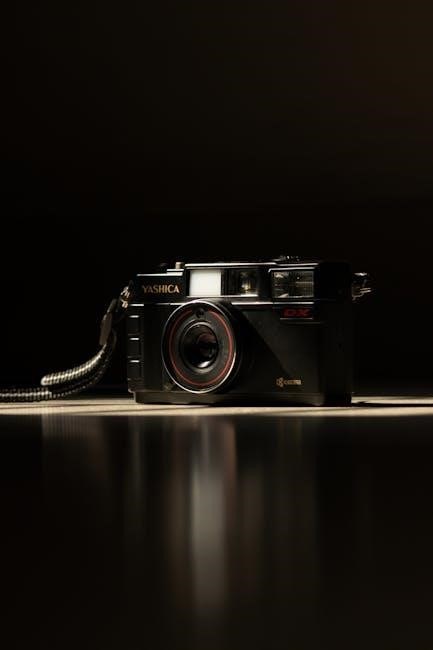
Advanced Focusing Techniques for Sharp Images
For sharp images with the Yashica 124, employ advanced focusing techniques. Use the hyperfocal distance method to maximize depth of field, ensuring more of the scene is in focus. With the rangefinder, align the brightline frames carefully, especially for close-up shots. Utilize the camera’s parallax compensation feature to adjust for accurate framing. When shooting landscapes, stop down the aperture to increase depth of field, while for portraits, shoot wide open to isolate subjects. Use a tripod for stability, particularly in low light, to avoid camera shake. Finally, preview your depth of field using the preview button to refine focus placement for optimal sharpness.
Exposure Control and Metering
Master exposure control on the Yashica 124 for precise results. Use its built-in light meter to measure ambient light accurately, ensuring balanced settings for optimal image quality.
Understanding Exposure Modes on the Yashica 124
The Yashica 124 offers versatile exposure modes tailored for creative control. Aperture Priority mode allows you to set the aperture, while the camera adjusts the shutter speed. Shutter Priority mode lets you control the shutter speed, with the camera setting the aperture. Manual mode provides full control over both aperture and shutter speed, ideal for precise adjustments. These modes empower photographers to balance artistic vision with technical accuracy, ensuring optimal results in various lighting conditions. The camera’s built-in light meter is essential for achieving accurate exposures, guiding adjustments for professional-quality images.
How to Use the Built-In Light Meter
The Yashica 124 features a built-in center-weighted light meter, activated by pulling the meter switch located on the lens barrel. Align the needle in the viewfinder with the center mark to achieve proper exposure. In aperture priority mode, set the aperture, and the meter will adjust the shutter speed. In manual mode, adjust both aperture and shutter speed until the needle centers. Ensure the meter is calibrated for accurate readings. Regularly check and calibrate the light meter for consistent results, especially when using different film stocks or lighting setups. Proper use of the light meter ensures well-balanced exposures, enhancing your photography experience with the Yashica 124.
Bracketing and Adjusting Exposure for Optimal Results
Bracketing on the Yashica 124 allows you to capture multiple exposures of the same scene at different settings. This technique is useful for high-contrast scenes where a single exposure may not capture all details. To bracket, adjust the aperture or shutter speed in increments (e.g., +/- 1 stop) and take multiple shots. Use the +/- exposure compensation dial for fine-tuned adjustments. Review your negatives to determine the best exposure. For consistency, bracket no more than 3-5 frames. This method ensures you capture a range of tonal values, making it easier to select the optimal exposure during development. Bracketing is especially valuable for medium format photography, where precise control over exposure is critical for achieving professional results.
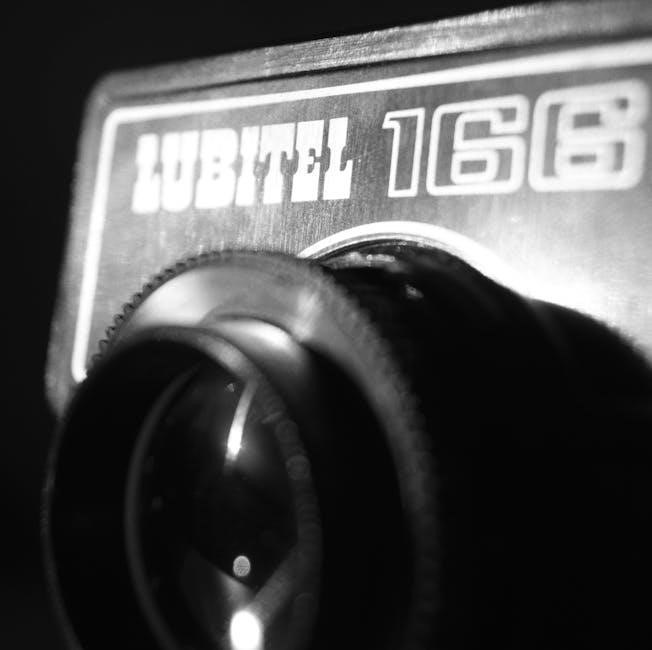
Camera Maintenance and Care
Regularly clean the Yashica 124’s exterior with a microfiber cloth and soft brush to prevent dust buildup. Store it in a dry place with silica gel to avoid mold. Always handle the camera gently to prevent mechanical damage. Check for light leaks and ensure all seals are intact for optimal performance. Proper care extends the camera’s lifespan and ensures sharp, consistent images. Use a lens cleaning tissue for the viewfinder and lens to maintain clarity. Lubricate moving parts sparingly to avoid attracting dust and dirt. Regular maintenance is key to preserving the Yashica 124’s functionality and value.
Cleaning and Maintaining the Lens
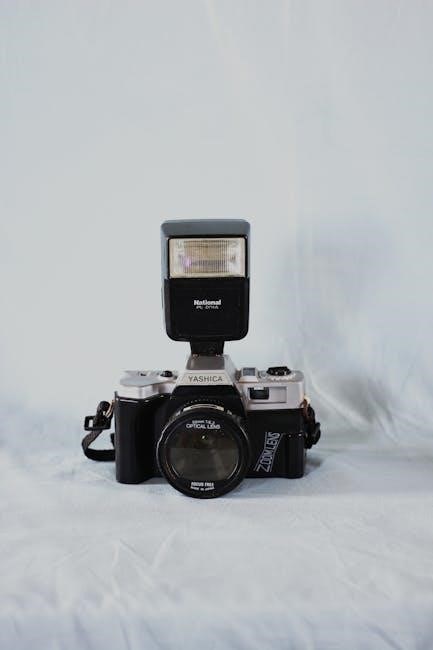
Cleaning the Yashica 124’s lens is essential for maintaining image quality. Use a soft, dry microfiber cloth to gently wipe away dust and smudges. For stubborn marks, lightly dampen the cloth with distilled water, but avoid harsh chemicals or tissues that may scratch the glass. Always clean in a circular motion, starting from the center and moving outward. Avoid touching the lens surface with bare hands, as oils can leave residue. For more thorough cleaning, use a lens cleaning tissue with a few drops of lens cleaning solution. Store the lens with a protective filter or cap to prevent damage. Regular cleaning ensures sharp, clear images and preserves the lens’s condition over time.
Lubricating Moving Parts and Shutter Mechanism
Lubricating the Yashica 124’s moving parts and shutter mechanism is crucial for smooth operation; Over time, mechanical components may become stiff or wear out due to friction; Use a high-quality, lightweight grease specifically designed for camera mechanisms. Apply a small amount to pivot points and gears, avoiding the shutter curtain and light-sensitive areas. Excess grease can attract dust, so wipe off any excess with a clean, dry cloth. Lubricate sparingly, as over-greasing can lead to residue buildup. Avoid using household oils, as they may degrade rubber parts. Regular lubrication ensures the shutter fires accurately and the camera functions reliably. If unsure, consult a professional to maintain optimal performance and longevity.
Checking and Replacing Light Seals
Checking and replacing light seals on the Yashica 124 is essential to prevent light leaks, which can ruin exposures. Over time, the original light seals degrade, becoming brittle or disintegrating. Inspect the seals around the film door, viewfinder, and lens. If cracked or missing, replace them immediately. Use a high-quality replacement kit designed for medium-format cameras. Peel off the old seals carefully and clean the area with alcohol. Apply the new seals firmly, ensuring no air bubbles form. For optimal results, replace all seals at once. Avoid using homemade materials, as they may not provide a proper light-tight seal. After replacement, test the camera with a blank film roll to confirm no leaks. Regular checks ensure consistent performance and image quality.
Troubleshooting Common Issues
Troubleshooting the Yashica 124 involves identifying issues like jammed shutters or light leaks. Regular maintenance and inspections help prevent mechanical failures. Clean the camera thoroughly and ensure all parts are lubricated. If problems persist, consult a professional technician for repairs. Always handle the camera with care to avoid damage. Regularly checking and replacing worn components, such as light seals, can prevent many common issues. Keep the camera stored in a dry, cool environment to maintain its performance and longevity. Addressing problems early ensures optimal functionality and preserves image quality. Professional servicing is recommended for complex mechanical issues. Always use genuine or high-quality replacement parts.
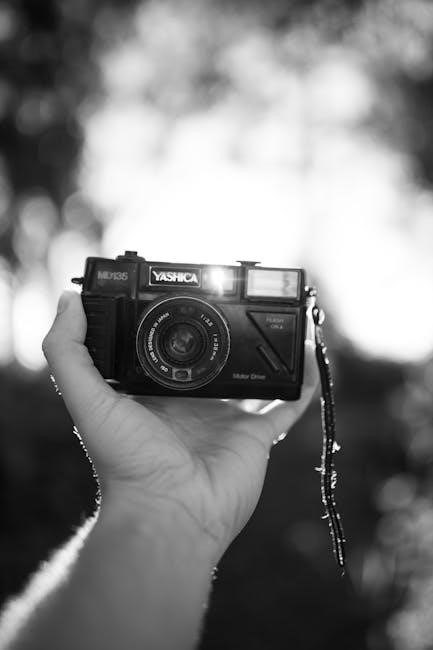
Identifying and Solving Common Mechanical Problems
The Yashica 124, like many vintage cameras, may experience mechanical issues such as sticky shutters or aperture malfunctions. To identify problems, inspect the shutter mechanism for slow or uneven movement and check the aperture blades for proper alignment. If the shutter remains open or closed, gently clean the mechanism with compressed air or a soft brush. Lubricate moving parts sparingly with high-quality grease. For persistent issues, disassemble the shutter carefully, but this requires expertise. If unsure, seek professional servicing. Regular maintenance, such as cleaning and lubricating, can prevent many mechanical failures. Handle the camera with care to avoid damaging the delicate components. Addressing these issues promptly ensures reliable performance and sharp, consistent images.
DIY Repairs and When to Seek Professional Help
For minor issues with the Yashica 124, DIY repairs can be effective. Cleaning the lens with a soft cloth and mild cleaning solution is a simple fix. Light leaks can often be resolved by replacing worn-out light seals, which can be purchased online. Lubricating hinge pins or other moving parts with a small amount of grease may restore smooth operation. However, complex problems like faulty shutters or electrical issues require professional attention. Attempting advanced repairs without expertise can cause further damage. Always use original or compatible replacement parts. If unsure, consult a professional camera technician familiar with medium format cameras. DIY repairs should be approached with caution to preserve the camera’s functionality and value.
Fixing Jammed Shutters and Other Operational Issues
Jammed shutters on the Yashica 124 can often be resolved by cleaning or lubricating internal mechanisms. First, inspect the shutter blades for dirt or debris, gently cleaning with compressed air or a soft brush. If the issue persists, apply a small amount of camera-specific lubricant to the pivot points. Avoid using excessive force, as this may damage the mechanism. For recurring problems, disassemble the shutter carefully and clean the internal components. If the shutter remains unresponsive, professional servicing is recommended. Regular maintenance, such as cleaning and lubricating moving parts, can prevent operational issues. Always handle the camera with care to avoid damage to its intricate mechanisms.
Mastering the Yashica 124 requires patience and practice. By understanding its mechanics, experimenting with techniques, and maintaining it properly, you’ll unlock its full creative potential. Enjoy the journey of analog photography with this timeless medium format camera.
Final Tips for Mastering the Yashica 124
- Practice consistently to refine your technique and understanding of the camera’s mechanics.
- Experiment with different film stocks to explore their unique characteristics and how they interact with the Yashica 124’s lens.
- Always carry a notebook to record settings, lighting conditions, and film types for future reference.
- Master the aperture priority mode by balancing ISO and aperture for optimal exposures.
- Use the waist-level viewfinder to its full potential for precise composition and focus.
- Regularly clean and maintain the camera to ensure smooth operation and sharp images.
- Bracket exposures when shooting in challenging lighting conditions to capture a wider dynamic range.
- Embrace the camera’s limitations as creative challenges to push your photography skills further.
By following these tips, you’ll unlock the Yashica 124’s full potential and elevate your medium format photography.
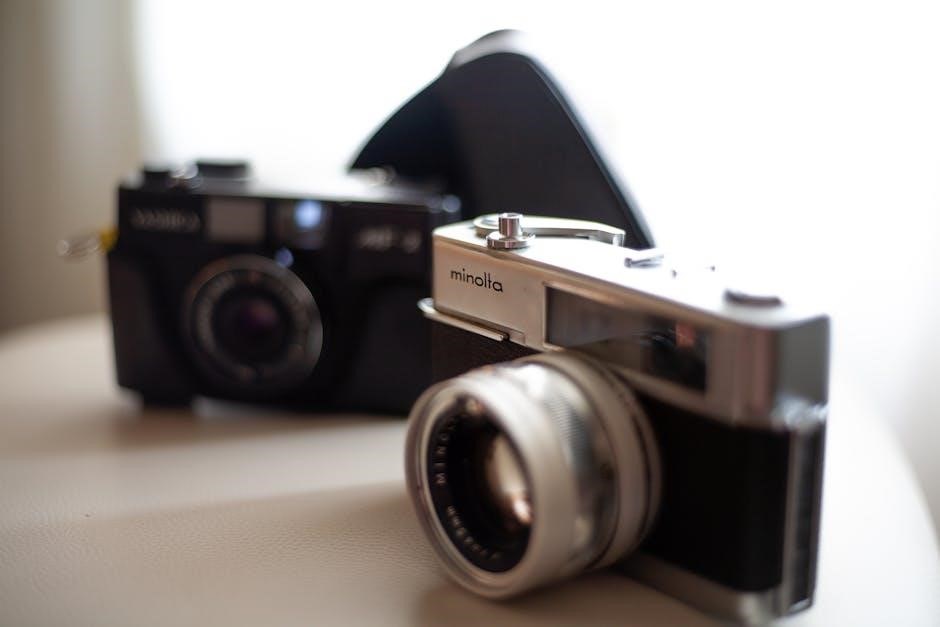
Resources for Further Learning and Support
For deeper understanding and hands-on guidance, explore dedicated online forums and photography communities. Websites like Flickr and Reddit host active groups sharing experiences and tips on the Yashica 124. YouTube channels offer tutorials and reviews, providing visual insights into camera operation and troubleshooting. Additionally, consider purchasing or downloading PDF manuals for detailed technical specifications. Local photography workshops or medium format enthusiast meetups can also offer practical advice and networking opportunities. Lastly, follow photographers who specialize in medium format film photography for inspiration and technical insights. These resources will help you refine your skills and stay connected to the Yashica 124 community.
